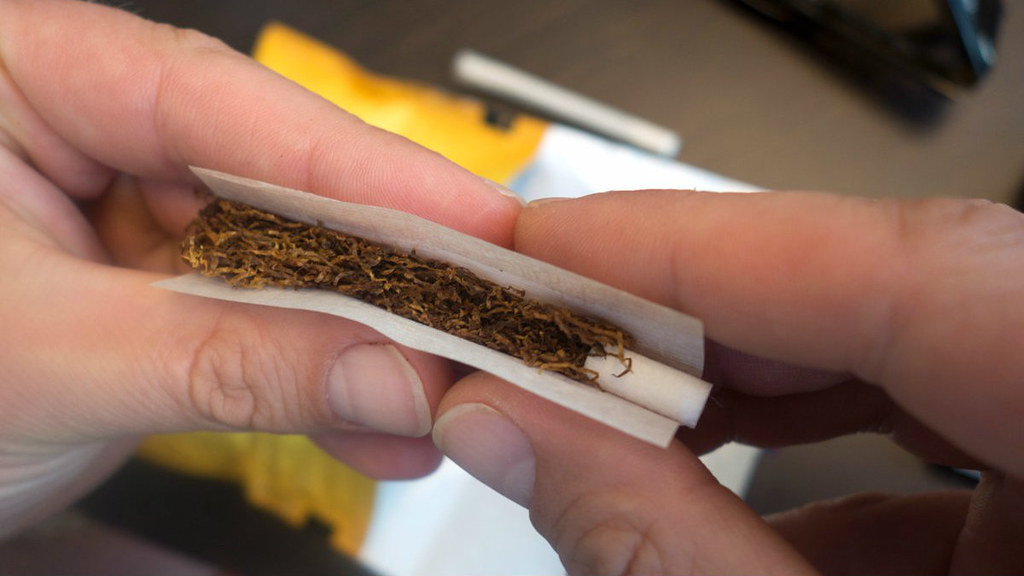Big tobacco companies have developed sophisticated pricing strategies in a ‘deliberate attempt’ to soak up tax increases and undermine public health efforts to reduce smoking, according to the authors of a significant new study.
Latest research, published in the journal Tobacco Control from academics at the University with colleagues at King’s College London, highlights how, in spite of regular tobacco tax increases, the industry has developed an array of tactics to ensure its product remains cheap for the poorest in society, undermining the public health benefits of tax increases.
The research raises important questions for policy-makers in advance of the Budget planned for 22 November. Whilst overall smoking rates are declining, inequalities in smoking remain marked. Latest data from September 2017, shows nearly a quarter (23%) of those in manual occupations smoke, compared to 12% in professional or clerical occupations.
Through analysis of sales data from 2009 – 2015, the authors of the new study show how the industry has undermined public health efforts by introducing new cheaper brands; reducing pack sizes; and using price-marking – putting the price on a pack to mark it as cheap so that retailers are locked into tobacco company imposed price points. Prices are also being altered to minimise the shock of tax increases.
Key findings
Among its key findings the paper highlights:
- From 2012, adjusting for inflation, average real prices for the cheapest factory made and roll-your-own products remained steady;
- Between January 2013 and December 2015 the price of ‘sub value’ cigarettes actually fell by 7 pence;
- The price gap between a pack of the cheapest and most expensive cigarettes and roll-your-own tobacco is increasing (from 2009-15 the inflation-adjusted price range from cheapest to most expensive roll-your own products grew from 10 pence to 16 pence per stick; for factory-made the gap widened from 7 pence to 13 pence per stick).
The study found that more and more smokers are switching to cheaper products, so while total sales of tobacco fell, sales of the cheapest cigarettes and particularly of roll-your-own increased.
Lead author Dr Rosemary Hiscock from the Tobacco Control Research Group at Bath explained: “Through sophisticated pricing strategies and clever tactics, such as price marked packs and small pack sizes, the industry is thwarting a public health measure in order to keep smokers hooked on tobacco and their profits rolling in. The introduction of standardised packaging and the Minimum Excise Tax in the UK goes some way to address this, but the government needs to grasp the full range of tactics the industry is deploying if it’s to deliver successful policy responses that truly protect public health.”
Policy responses
In addition to renewing the tax escalator, recommended policy responses include:
- A further increase in tax on roll-your-own to bring it more in line with tax on cigarettes;
- Ensuring minimum excise taxes are maintained at least in line with inflation;
- Restricting brands to just one variant in order to stop the industry from introducing new cheap brands;
- Limiting the number of times industry can change pricing during the year to stop it undermining the impact of tax changes;
- Implementing larger intermittent tax increases.
The team behind the paper notes the government has been doing the right things in some areas, including implementing a minimum excise tax and standardised packaging, which will reduce options for tobacco companies to sell cheap products by preventing price marking and small pack sizes.
Co-author, Dr Rob Branston from the University of Bath’s School of Management, added: “The industry is effectively manipulating the system: it is absorbing the tax increases on the cheapest brands to make sure they stay cheap. It does this especially around the time of the Budget to hoodwink smokers. But later in the year it gradually puts the cost of these products up, hoping smokers won’t notice. This game is possible because of the massive profits it is making on its premium products.
Professor Ann McNeill, Principal Investigator and Professor of Addiction, Institute of Psychiatry, Psychology & Neuroscience, King’s College London said: “That real prices of some tobacco industry products have not changed since 2012 is of great concern. It is likely that tobacco manufacturers are using similar strategies elsewhere too. Governments around the world therefore need to wise up to this and put in place policies to prevent the tobacco industry from marketing cheap legal tobacco products to consumers.”
Professor Anna Gilmore, Director of the Tobacco Control Research Group, added: “Our recommendations would be a win-win, enabling smokers to quit while raising government revenue that in turn should be used to support smokers in quitting and make a contribution to the enormous cost of tobacco on society.”
“The tobacco industry uses cheap products to hook children into a deadly habit and keep smokers who would otherwise quit, smoking. The government has closed some loopholes enabling it to do this, but more needs to be done.
“The upcoming Budget is an opportunity for the government to address this deliberate attempt by the tobacco industry to undermine a life-saving public health measure. One solution would be to restrict brands to just one variant in order to stop the industry from introducing new cheap brands.”
- Funding acknowledgement: This research was funded by the NIHR Public Health Research Programme (project number 13/43/58)
- Department of Health disclaimer: The views expressed are those of the authors and not necessarily those of the NHS, the NIHR or the Department of Health
